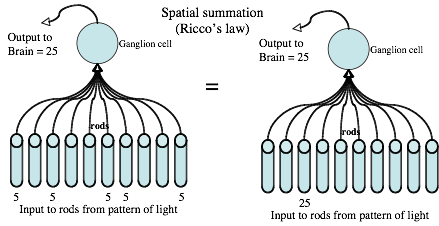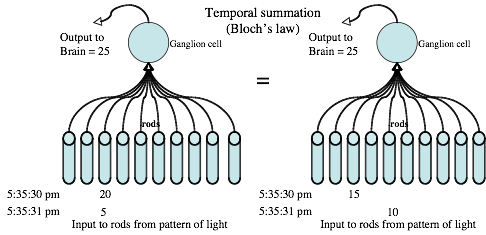Spatial and temporal summation
Spatial and temporal summation allow for the rod system to collect up more light from a scene; in this way it raises its sensitivity (the ability to detect small amounts of light).
What is interesting about all 4 of these cases illustrated here is that they are exactly equivalent as far as the brain is concerned (it couldn’t be any other way: the output to the brain is the same, ’25 units of activity’, in every case).
But notice that the pattern of light falling on the rod detectors is very different in each case. By definition, different patterns means different images. This means that these different patterns are producing the same output to the brain, which means that the brain thinks they’re all the same.
That’s why, in the case of spatial summation, this rod system would have trouble distinguishing the different images, say, produced by the tiny letters in the Snellen Eye Chart. In this way, the rod system has lower resolution; it has increased sensitivity at the expense of resolution.
15. Spatial and temporal summation
1:27 PM
Gathering light over space and/or time allows for greater effective sensitivity to light.


Note that these illustrations are oversimplified; there are other ‘collector cells’ (e.g. bipolar and horizontal) that should be in an anatomical picture of the retina.
